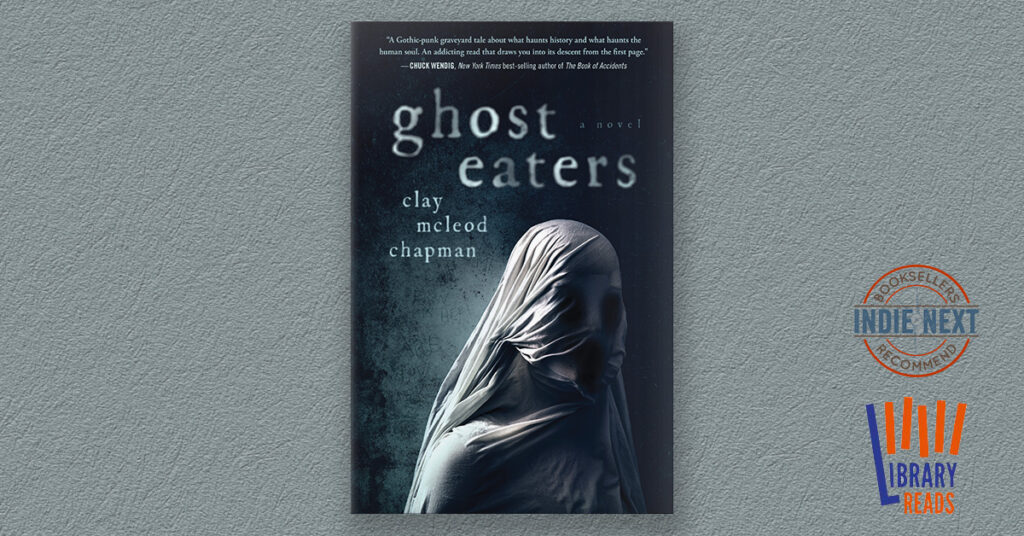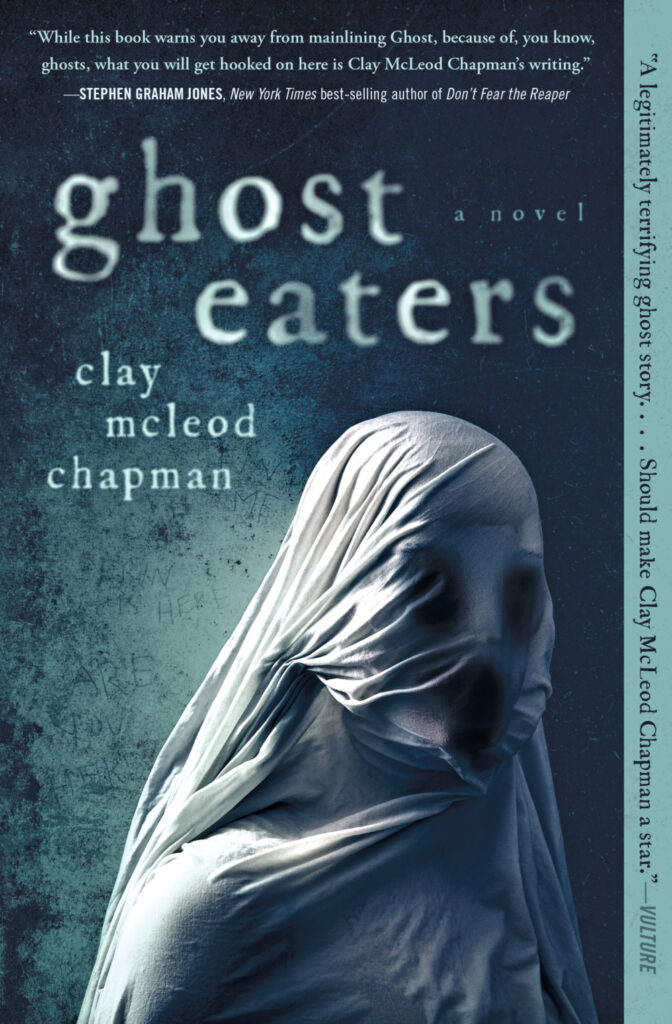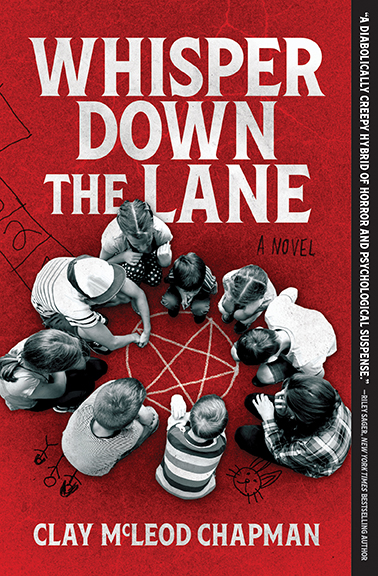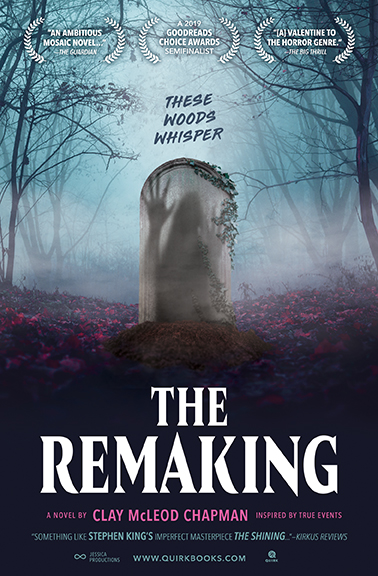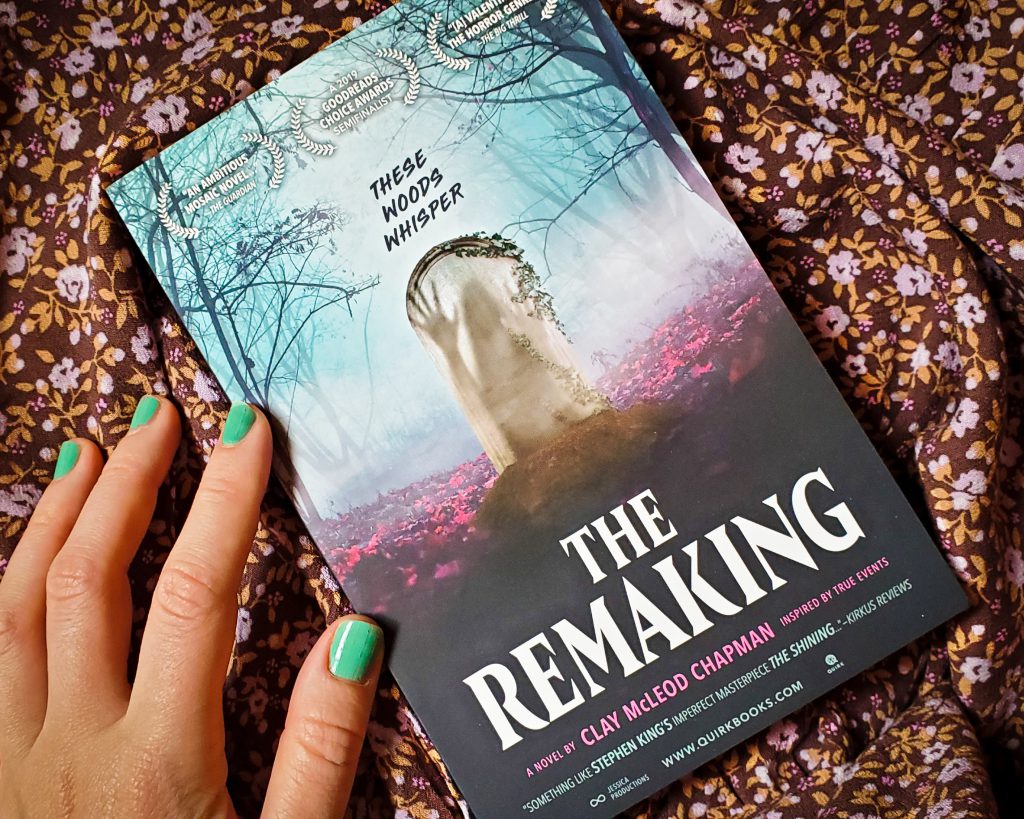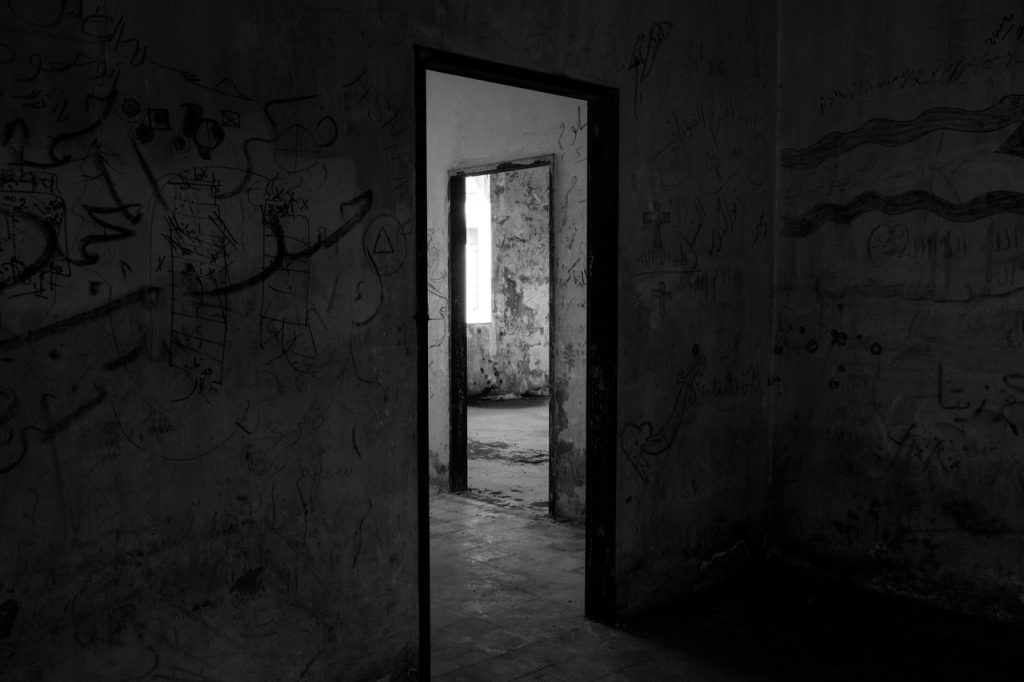Wanna Get Haunted?: A Look at Clay McLeod Chapman’s Inspiration for Ghost Eaters
We’ve all got our ghosts. Some of them simply stick around a lot longer than others. For my new novel, Ghost Eaters, the idea had been haunting the back of my brain for years.
Five-ish, to be (kind of) exact.
Somewhere in 2015—or was it 2016?—I was tapped to develop a feature film project about a “haunted drug.” That was it, that was the whole concept thus far—a hallucinogenic that allows you to see ghosts. The jaw-dropping It Follows had come out the year before and now everybody wanted to repeat its premise in whatever diluted rendition they could whip up. I absolutely loved David Robert Mitchell’s film and was down for the challenge to innocuously riff. The original recipe was a supernatural STD. Sleep with someone who’s infected and they infect you. The “it” in It Follows was a nebulous malevolent presence, stripped of its own identity and yet palpably present all the same. It never talked, never reason, it just… followed.
So this production company wanted to do swap out the sex with drugs. Think a haunted Molly. We started with the idea of a designer drug gone bad. A group of listless teens tap into the hereafter after dosing at a rock concert and pay the price with their lives. They’re getting picked off by this whatever-it-is, hunting them down in their hallucinations. Is it real or is it all in their heads? The group of pals get whittled down to our final girl, who somehow tracks down the scientist who first created the drug and he gives her the antidote and… and…well, yeah.
We’re all just looking for our own Freddies, aren’t we?
The hope had been to come up with a Krueger-like creature that we could return to sequel after sequel…and that’s pretty much where our story started to collapse. The notion that there would be one malevolent presence on the other side of the veil just never seemed to jive with the original premise of a pill that permits you to see the dead, and after a few months of struggling to crack the story, it simply fizzled. Everybody involved moved on to the next story.
But I couldn’t let go. Or, more to the point…the story wouldn’t let go of me.
There are ideas and then there are IDEAS. Inspiration whispers at the weirdest of moments, within the simplest of circumstances, so subtle in its insistence that we might not even be aware of their impact until much, much later, but I found myself returning to the haunted-drug premise frequently, much like returning to the ruins of an abandoned house.
I wanted in to this story so bad.
I wanted to get haunted.
The road to Hollywood is littered with shuttered film projects. I’ve been responsible for a few foreclosed features, myself. Once these stories held a glimmer of promise to become something majestic. Now they merely stand empty and derelict. But for whatever reason, this idea—haunted drug haunted drug haunted drug—kept calling to me, luring me back to it.
I just needed to break in.
Sometimes you get an idea for a story but you just don’t know how to crack it. In situations like these, the best—the only—thing to do is simply file the idea away until you figure it out. But no joke: I was haunted by this story. It felt like I had a ghost in my head that simply wouldn’t move on, rattling its chains in my brain. I kept coming back to it, obsessing over it.
I started to interrogate myself over why this story wouldn’t let go. Isn’t that what cursed protagonists do in these horror movies? They have to figure out WHY these ghosts won’t move on. What binds them to our realm? How can you break those chains and set these spirits free? In The Ring, our plucky reporter is on a mission to solve the mystery of Sadako/Samara before time runs out, and I felt much the same: I needed to crack this story before it killed me.
I started to interrogate myself: What does this story want from me? Why won’t it let go?
Why me?
Turns out I needed to dig a little deeper into myself. Six feet under. There were people in my past who I hadn’t made peace with. I found myself turning inward now, turning the story over in my head through a new perspective: my own experiences with loss, with grief, with ghosts. The more honest with myself I was, the more the story suddenly began to flourish. It took shape. Took on a corporeal form. Took on a life of its own. It, in fact, became a novel.
Maybe this says something about me and my writing process, but inspiration hits and it feels like a full-on possession. Until I get these stories exorcised out from my head, they won’t let go. Move on. I need to write them out of my system or they’ll remain in my brain forever.
This notion of a haunted drug found me in Hollywood. It followed me back home to Brooklyn. It followed me for years, right behind my back. Every time I turned and looked over my shoulder, there it was, impatiently waiting for me to tell its story, to set it free and finally unleash it onto the rest of the world.
Now it’s your turn…
Want to get haunted?
Quirk Tested. Reader Approved.
Clay McLeod Chapman
Clay McLeod Chapman is the creator of the storytelling session “The Pumpkin Pie Show” and the author of Rest Area, Nothing Untoward, and The Tribe trilogy. He is the co-author, with Nightmare Before Christmas director Henry Selick, of the middle grade novel Wendell and Wild. In the world of comics, Chapman’s work includes Lazaretto, Iron Fist: Phantom Limb, and Edge of Spiderverse. He also writes for the screen, including The Boy (SXSW 2015), Henley (Sundance 2012), and Late Bloomer (Sundance 2005). You can find him at claymcleodchapman.com.
